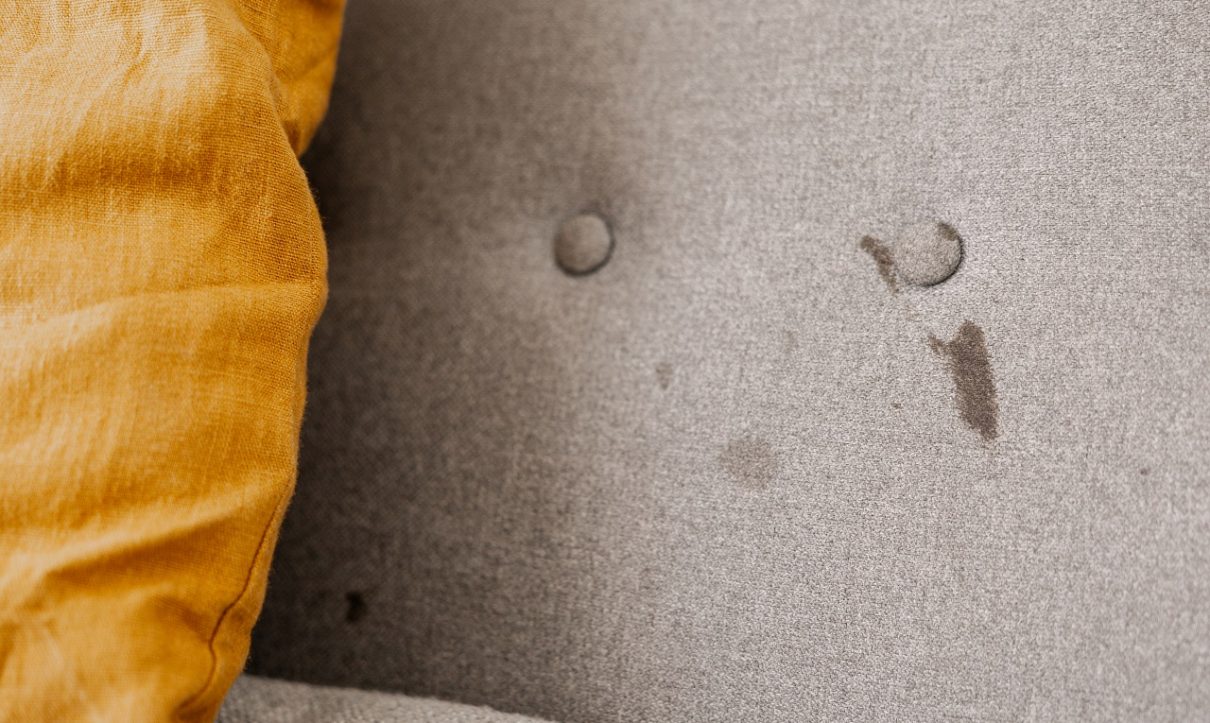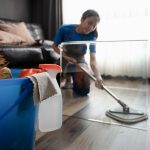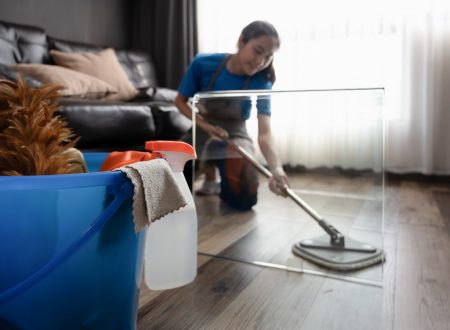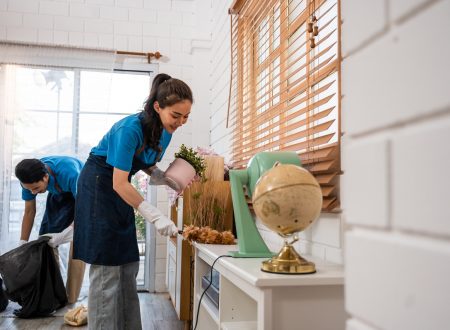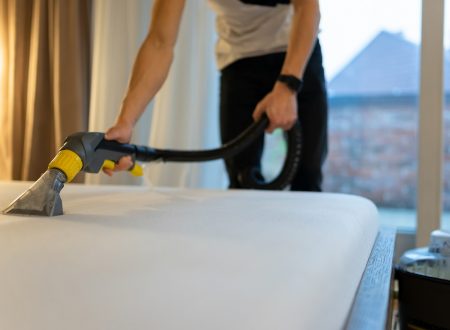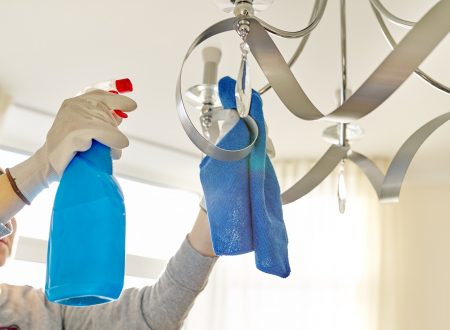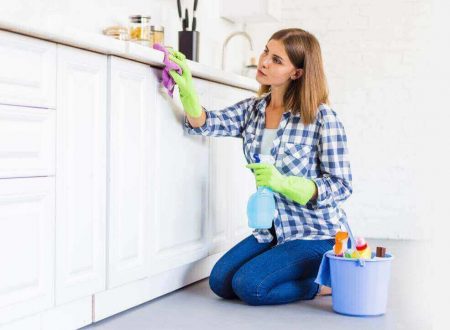For many homeowners in Essex, pets are cherished members of the family, bringing immense joy, companionship, and unconditional love. However, alongside the cuddles and playful antics, pet ownership often comes with its own set of challenges, particularly when it comes to maintaining a clean and fresh home. Accidents happen, and even the most well-behaved pets can leave behind stubborn stains and persistent odours that can be incredibly difficult to eliminate.
These pet-related cleaning issues, from urine stains on carpets to lingering odours in upholstery, can detract from the comfort and hygiene of your living environment. DIY cleaning attempts often fall short, as they typically only address the surface of the problem, leaving behind hidden residues and odour-causing bacteria that can lead to repeat accidents and long-term damage to your furnishings.
At Bansal’s Cleaning, we understand the unique challenges faced by pet owners in Essex. We specialise in professional pet stain and odour removal, offering expert solutions that go beyond surface cleaning to eliminate stains and odours at their source. Our advanced techniques and pet-safe products ensure that your home is not just visibly clean but also hygienically safe for both your family and your furry friends. This guide will explore the science behind pet stains and odours, our effective removal process, and why Bansal’s Cleaning is the trusted choice for restoring freshness and cleanliness to your pet-loving home in Essex.
Understanding Pet Stains and Odours
To effectively address pet stains and odours, it’s essential to understand the science behind them and why they are so notoriously difficult to remove. Pet accidents, particularly urine, are complex chemical compositions that require specialised treatment to be fully eliminated.
Types of pet accidents include urine, faeces, and vomit, each presenting its own cleaning challenges. Urine is particularly problematic due to its chemical makeup. As it dries, it forms uric acid crystals that are not water-soluble and cannot be removed with standard cleaning products. These crystals are the primary source of the persistent, pungent odour associated with pet urine.
Why pet odours are particularly challenging lies in the fact that as the urine decomposes, it releases ammonia and other volatile organic compounds (VOCs), which create a strong, unpleasant smell. Furthermore, bacteria begin to feed on the organic matter in the urine, producing even more odour-causing compounds. This is why the smell often seems to worsen over time, especially in humid conditions.
The science behind odour molecules is that they are microscopic particles that become airborne and are detected by our sense of smell. To eliminate the odour, you must eliminate the source of these molecules. Simply masking the smell with air fresheners is a temporary solution that doesn’t address the underlying problem. The uric acid crystals must be broken down and removed to permanently eliminate the odour.
Finally, there are significant health implications of untreated pet stains. The bacteria that thrive in pet stains can pose health risks to both humans and pets, particularly young children who play on the floor. Additionally, the ammonia released from urine can irritate the respiratory system, especially for individuals with asthma or allergies. Untreated stains can also lead to mould and mildew growth, further compromising indoor air quality. Understanding these complexities highlights the need for professional intervention to ensure complete and safe removal of pet stains and odours.
Common Pet Stain Challenges
Pet stains can affect a wide range of surfaces in your home, each presenting its own unique cleaning challenges. Understanding these challenges is the first step towards effective removal and restoration.
Carpet stains are one of the most common issues faced by pet owners. When a pet urinates on a carpet, the liquid penetrates deep into the fibres and can even reach the carpet backing and the subfloor beneath. This deep penetration makes it incredibly difficult to remove the stain and odour completely with surface cleaning methods. The uric acid crystals become embedded in the carpet fibres, leading to persistent odours and a high likelihood of repeat accidents, as pets are drawn to the scent.
Upholstery stains on sofas, chairs, and other furniture pose similar challenges. The fabric and padding of upholstered furniture can absorb pet urine quickly, making it difficult to extract. Different upholstery materials require specific cleaning methods to avoid damage, and improper cleaning can lead to colour bleeding, shrinkage, or permanent staining. The odour can also become trapped in the foam padding, making it particularly challenging to eliminate.
Hard floor stains might seem easier to clean, but they can also be problematic. Pet urine can seep into the grout lines of tile floors or penetrate the finish of hardwood floors, causing staining and damage. The porous nature of grout and wood allows the urine to be absorbed, leading to persistent odours and potential discolouration. Specialised cleaning and sealing may be required to fully address the issue.
Mattress stains are a significant concern for both hygiene and health. If a pet has an accident on a bed, the urine can penetrate deep into the mattress layers, creating a breeding ground for bacteria and allergens. The odour can be particularly difficult to remove from a mattress, and the moisture can lead to mould and mildew growth.
One of the most frustrating challenges is repeat offending. Pets have a strong sense of smell and are naturally drawn to areas where they have previously urinated. If the odour is not completely eliminated at a molecular level, your pet is likely to return to the same spot, perpetuating a cycle of accidents and staining. This is why professional odour neutralisation is so crucial for long-term success.
Why DIY Methods Often Fail
When faced with a pet stain, many homeowners reach for off-the-shelf cleaning products and attempt a DIY pet stain removal. While this approach might seem convenient and cost-effective, it often fails to deliver a complete solution and can sometimes make the problem worse.
One of the primary reasons for failure is incomplete odour removal. Most household cleaning products are not formulated to break down the uric acid crystals in pet urine. While they may temporarily mask the smell with fragrances, the underlying odour-causing compounds remain, leading to the return of the unpleasant smell, especially in humid conditions. This incomplete odour removal also encourages pets to re-soil the same area.
DIY methods typically only provide surface cleaning vs deep treatment. When a pet has an accident, the urine penetrates deep into the carpet fibres, padding, and even the subfloor. Surface cleaning with a cloth or sponge cannot reach these deeper layers, leaving behind a significant portion of the urine and odour-causing bacteria. This hidden residue continues to cause problems long after the visible stain has faded.
Using the wrong cleaning products can make stains worse. Some common cleaning agents, such as those containing ammonia, can actually set the stain and make it more difficult to remove. Others can damage delicate carpet or upholstery fibres, leading to colour bleeding, fading, or permanent damage. Without professional knowledge of different materials and stain types, it’s easy to choose a product that does more harm than good.
There is a significant lack of professional equipment in a typical household. Professional cleaners use powerful hot water extraction machines that inject cleaning solution deep into the fibres and then extract it along with the dissolved dirt and urine. This deep extraction is crucial for removing the source of the stain and odour completely. Rental machines and household carpet cleaners simply do not have the same level of power and effectiveness.
Finally, there are the time and effort limitations of DIY cleaning. Properly treating a pet stain can be a time-consuming and labour-intensive process, often requiring multiple treatments and specialised techniques. For busy homeowners, finding the time and energy to tackle the problem effectively can be a significant challenge. These limitations often lead to incomplete cleaning and frustrating results, highlighting the value of professional expertise.
Our Professional Pet Stain Removal Process
At Bansal’s Cleaning, our professional pet stain removal process is a systematic and scientific approach designed to eliminate stains and odours at their source, delivering a comprehensive and lasting solution. Our trained technicians follow a multi-step process that addresses both the visible and hidden aspects of pet accidents.
- Assessment: The process begins with a thorough assessment of the affected areas. Our technicians use specialised moisture sensors and UV lights to identify all areas of contamination, including those that are not visible to the naked eye. This allows us to determine the full extent of the problem and develop a targeted treatment plan.
- Pre-Treatment: Once the affected areas are identified, we apply a specialised enzyme-based pre-treatment. These powerful enzyme cleaners are designed to break down the organic matter in pet urine, including the uric acid crystals, at a molecular level. The pre-treatment is allowed to dwell for a specific period, giving the enzymes time to work their magic and break down the source of the stain and odour.
- Deep Extraction: After the pre-treatment has had time to work, we use our professional-grade hot water extraction equipment to perform a deep extraction. This process injects a rinsing solution deep into the carpet or upholstery fibres and then immediately extracts it along with the dissolved urine, enzymes, and other contaminants. For severe cases, we may perform a sub-surface extraction to remove urine from the carpet padding and subfloor.
- Odour Neutralisation: To ensure that all odours are completely eliminated, we apply a professional-grade odour neutraliser. This product targets any remaining odour-causing molecules, ensuring that the area is left smelling fresh and clean. This step is crucial for preventing repeat accidents, as it eliminates the scent markers that attract pets back to the same spot.
- Sanitisation: Pet stains can harbour harmful bacteria, so we include a sanitisation step in our process. We apply a safe and effective antimicrobial treatment that kills bacteria and other microorganisms, ensuring that the area is not just clean but also hygienically safe for your family and pets.
- Protection: Finally, we can apply a protective treatment to your carpets or upholstery. This creates an invisible barrier that helps to repel future stains, making it easier to clean up any subsequent accidents and preventing them from penetrating deep into the fibres. This proactive measure helps to keep your home looking and smelling fresh for longer.
Specialised Treatments for Different Surfaces
Pet accidents can occur on a variety of surfaces, each requiring a specialised treatment approach to ensure effective removal without causing damage. At Bansal’s Cleaning, our technicians are trained to handle the unique challenges presented by different materials.
For carpet treatment, we typically use our comprehensive steam cleaning and enzyme application process. The hot water extraction method is highly effective at removing stains and odours from deep within the carpet fibres. We adjust the temperature, pressure, and cleaning solutions based on the type of carpet to ensure a safe and effective clean.
Upholstery care requires a more delicate approach, as different fabrics have varying levels of sensitivity to moisture and cleaning agents. Before treating upholstery, we perform a colour-fastness test in an inconspicuous area to ensure the fabric is safe to clean. We then use low-moisture cleaning methods or specialised dry cleaning techniques for delicate materials like silk or velvet. Our upholstery cleaning services are designed to remove pet stains and odours while preserving the integrity and appearance of your furniture. You can learn more about our comprehensive upholstery care on our Upholstery Cleaning page.
For hard floor solutions, such as tile and grout or hardwood floors, we use specialised cleaning agents that can penetrate porous surfaces to remove urine and odours. For grout lines, we may use a high-pressure cleaning tool to extract the contamination. For hardwood floors, we use gentle yet effective cleaners that remove the stain without damaging the finish, followed by a neutralising rinse.
Mattress treatment for pet accidents focuses on deep sanitisation and odour removal. We use enzyme-based cleaners and extraction methods that are safe for sleeping surfaces, ensuring that the mattress is not only clean but also hygienically safe. We also pay close attention to proper drying to prevent mould and mildew growth.
For curtain and drape cleaning, we offer on-site or off-site cleaning options depending on the fabric and level of soiling. Our gentle cleaning methods remove pet hair, dander, and odours from curtains and drapes, restoring their freshness and appearance.
This surface-specific treatment approach ensures that no matter where a pet accident occurs, we have the expertise and equipment to address it effectively and safely.
Advanced Odour Elimination Techniques
Eliminating persistent pet odours requires more than just cleaning; it demands advanced odour elimination techniques that target and destroy odour-causing molecules at their source. At Bansal’s Cleaning, we employ a range of professional-grade methods to ensure your home is left smelling fresh and clean.
Enzyme treatments are the cornerstone of our odour elimination process. These powerful biological cleaners contain enzymes that are specifically designed to break down the organic compounds found in pet urine, faeces, and vomit. By digesting the source of the odour, these treatments permanently eliminate the smell rather than simply masking it. We use high-quality, professional-strength enzyme cleaners for maximum effectiveness.
For severe or widespread odour issues, we may recommend ozone treatment. Ozone (O3) is a powerful oxidising agent that effectively destroys odour molecules, bacteria, and viruses. This treatment is performed in an unoccupied space, as ozone can be harmful to breathe. Our trained technicians use professional ozone generators to safely and effectively deodorise entire rooms, leaving them fresh and sanitised.
UV sanitisation is another advanced technique we use to kill bacteria and germs that contribute to odours. UV-C light has germicidal properties that can effectively sanitise surfaces without the use of chemicals. This is particularly useful for treating mattresses and upholstery, providing an additional layer of hygiene and odour control.
Thermal fogging is a method used for deep odour neutralisation in large or heavily contaminated areas. This process involves using a fogging machine to disperse a fine mist of deodorising solution that penetrates deep into porous surfaces like carpets, upholstery, and even wall cavities. The fog mimics the behaviour of smoke, allowing it to reach and neutralise odours in hard-to-access areas.
Finally, we may use air purification systems with HEPA filters and activated carbon to improve overall air quality after a deep cleaning and odour treatment. These systems capture airborne particles, allergens, and remaining odour molecules, ensuring that the air in your home is as clean and fresh as your carpets and upholstery. This comprehensive approach to odour elimination ensures that we can tackle even the most challenging pet odour problems with confidence.

